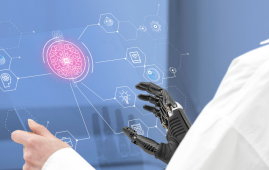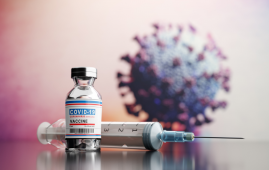The transition to modern information technologies in medicine improves the quality of service, makes it possible to conduct remote consultations, remote processing of primary information, store patient data in digital form for a long time and, if necessary, access them from anywhere the world.
The digitalization of patients’ personal data also implies appropriate methods of information protection. In 2016, information security breaches in the healthcare sector affected over 27 million patient records, and theft rates will only increase over the next few years.
Patient personal data is one of the most confidential and valuable personal information, so healthcare organizations that implement a proactive approach to security practices are best equipped to ensure ongoing compliance and at lower risk of suffering costly data breaches.
In this article, we have discussed about the data protection best practices that are developed not only to protect patient data but also to anticipate and prevent any offensive action by cybercriminals.
Blockchain
Decentralizing the blockchain significantly reduces the chances of database falsification. The way that hackers usually get hold of information is by attacking the place where all the data is clustered – the mainframe. In the blockchain, this is almost impossible. Because all information is stored distributed over the blockchain network, and therefore for hackers, there is no data artery that needs to be attacked.
Instead, they need to corrupt the same data across all blocks. Seeing that every change in the blockchain becomes noticeable to all participants, and it must be approved by their majority, then such an attack would require an insane amount of computer power, which instantly stops almost any cybercriminal from such a feat.
Access Rights Monitoring
First of all, it is necessary to conduct an audit to determine access levels and scenarios for users to work with patients’ personal data. To monitor rights in mid-sized companies, it is better to use centralized tools that scan the corporate network and automatically detect violation of authority or potentially dangerous actions of users with information.
For example, SIEM systems serve as such a tool. In large companies, even deeper automation of rights auditing is recommended using specialized tools of the IDM class. Implementation and maintenance of IDM solutions is often a unique process that takes into account the specifics of a specific industry and each specific customer. The main monitoring principle is the daily audit of all access objects. The goal is to restrict users from creating new objects on their own and to carefully monitor changes in access privileges to already created objects.
Restrict Access to Data and Applications
The protection of healthcare data can be improved by restricting access to patient information and providing it to only authorized users. Access restrictions imply user authentication to receive protected data.
Multi-factor authentication is the recommended approach that requires users to confirm that they are in fact authorized to access certain patients’ personal data using a variety of verification methods.
Encrypt Data at Rest and in Transit
Encryption of data in transit and at rest makes it difficult to decipher patient information, even having access to the data. Since 2003, when the HIPAA requirements were finally formulated, enterprise encryption systems have advanced significantly. Businesses today can encrypt data without sacrificing productivity, making additional changes to the applications they use or incurring additional management costs.
Organizations eligible for HIPAA must understand the pros and cons of different approaches to encryption as soon as possible. To avoid large-scale leaks of confidential patient health data, organizations should develop an encryption strategy that provides adequate protection for data stored in distributed information environments or in data centers.
Conduct Regular Risk Assessments
To gain access to your information system, malicious programs and attackers most often use either unsafely configured applications or applications with vulnerabilities. You need to ensure that your operating system and applications (especially web browsers) are up to date and configured correctly.
In addition, it is recommended that you use anti-malware mechanisms that may be built into your operating system. Regular risk assessments help determine security vulnerabilities or weaknesses in a healthcare organization to proactively identify and reduce potential risks and prevent costly data breaches.
Conduct Control of Software Installed on Employees’ Computers
Controlling installed software is a key component of effective information security. Malicious software on your network can pose risks that need to be minimized, and this includes legal liability for the use of unlicensed software.
Non-updated software is a common cause of malware infiltration that leads to attacks on your information systems. By understanding what software is installed on your network, controlling the software being installed, and protecting accounts with administrator rights, you reduce the likelihood and impact of information security incidents.
Backup Management
Creating and managing backups can be a chore and not a very exciting task, however, it is one of the best ways to protect your data, recover from a disaster, and get your business back on track. This is important because ransomware can encrypt all of your data and block it until it ransoms. A robust response plan, complemented by current and maintained backups, is the best defense against an information security incident.
Protecting data in healthcare is no easy task. However, personal data protection should be carried out in a comprehensive manner, implementing several technologies at once. The more methods are used, the less the likelihood of threats and leaks, and the more stable the healthcare company’s position in the market.











Leave a Comment